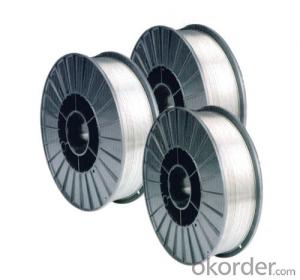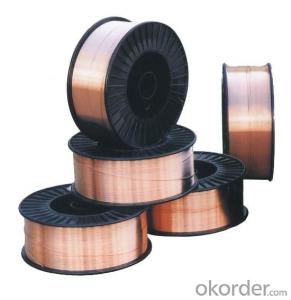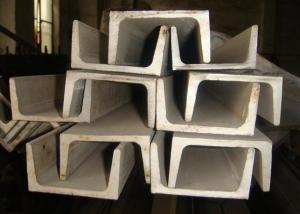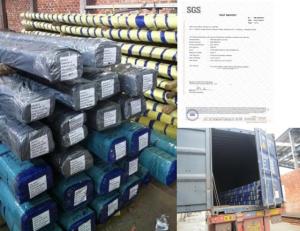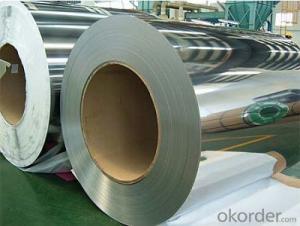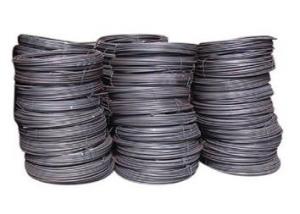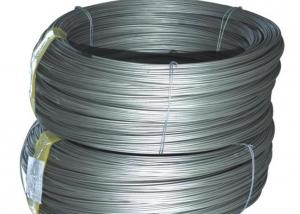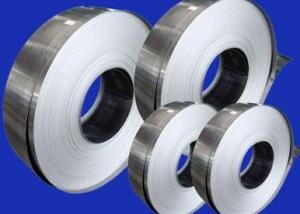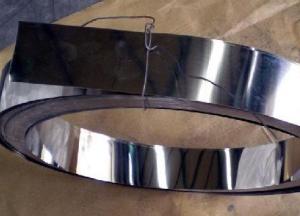AWS a5.18 er70s-6 co2 Gas Shileld Welding Wire
- Loading Port:
- Qingdao
- Payment Terms:
- TT or LC
- Min Order Qty:
- 10 m.t.
- Supply Capability:
- 1000 m.t./month
OKorder Service Pledge
OKorder Financial Service
You Might Also Like
AWS a5.18 er70s-6 co2 Gas Shileld Welding Wire
Main Structure:
aws a5.18 er70s-6 co2 welding wire
-Factory supply
-OEM packing
-0.8-1.6mm
-Spool drum pack, 10 days deliver
aws a5.18 er70s-6 co2 welding wire fil à souder
1. Brief Introduction:
aws a5.18 er70s-6 co2 welding wire fil à souder has excellent mechanical performance such as depositing speed and high efficiency, stable arc, little splash, good welding seam.
This series of welding wires are suitable for the low carbon steel and low alloy structure, vehicle, bridge, container, construction machinery, boilers and construction etc.have depositing speed and high efficiency, stable arc, little splash, good welding seam.
2. Advantages:
1. very low welding cost, high productivity and low electricity consumption.
2. excellent welding performance, stable arc, low spatter, easy slag removal.
3. perfect welding seam forming, small weld metal stomatal sensitivity.
4. easy operating, all position welding.
5. very low hydrogen content in the weld and lower nitrogen content, excellent crack-resistance.
6. little deformation after welding.
7. wide applicability. suitable for welding thin, medium and thick plates.
8. Suitably wide range of welding current.
3. Usage:
ER70S-6 Welding Wire for Low Carbon Steel Weld has been widely used in all kind of field. such as automotive industries, construction machinery production, shipbuilding, metallurgical equipment production, bridges, civil works, petrochemical industry, pressure vessels of boiler, locomotives, etc.
4. Size:
Wire Size | Spool Size | Package Size |
0.8mm 1.0mm | D100mm D200mm D300mm K300mm | 1kg 5kg 15kg 20kg 250kg 350kg |
5. Chemical Composition:
C | Mn | Si | S | P | Cu | Other | |
standard value | 0.06-0.15 | 1.40-1.85 | 0.80-1.15 | ≤0.035 | ≤ 0.025 | ≤ 0.50 | ≤ 0.50 |
sample value | 0.08 | 1.51 | 0.92 | 0.020 | 0.016 | 0.20 | 0.02 |
6. Typical Mechanical Properties of Deposited Metal:
Tenile strength δb (MPa) | Yield Point δ0.2(MPa) | Elongation δ5 (%) | AKV Impact Value (J) (-20°C) | Shielding Gas |
≥ 500 | ≥ 420 | ≥ 22 | ≥ 27 | 100%CO2 |
560 | 500 | 27 | 102 | 100%CO2 |
7. Diameter of Wire & Reference Current (DC+):
Diameter of wire (mm) | Ø0.8 | Ø 1.0 | Ø 1.2 | Ø 1.6 |
F current (A) | 40-180 | 50-220 | 80-350 | 170-550 |
V current (A) | 40-140 | 50-160 | 50-180 | |
OH current (A) | 40-120 | 50-160 | 45-180 |
8. Package:
1kg/ 5kg/ 15kg/ 20kg plastic spool
15kg/ 20kg metal spool
250kg/350kg drum
9.Picture:
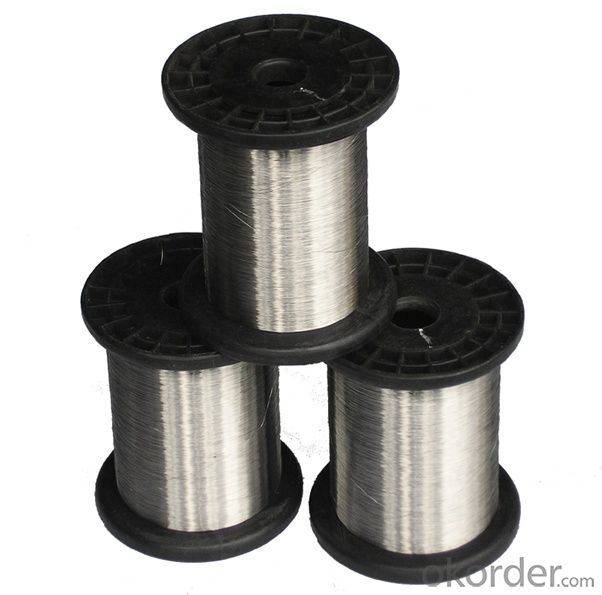
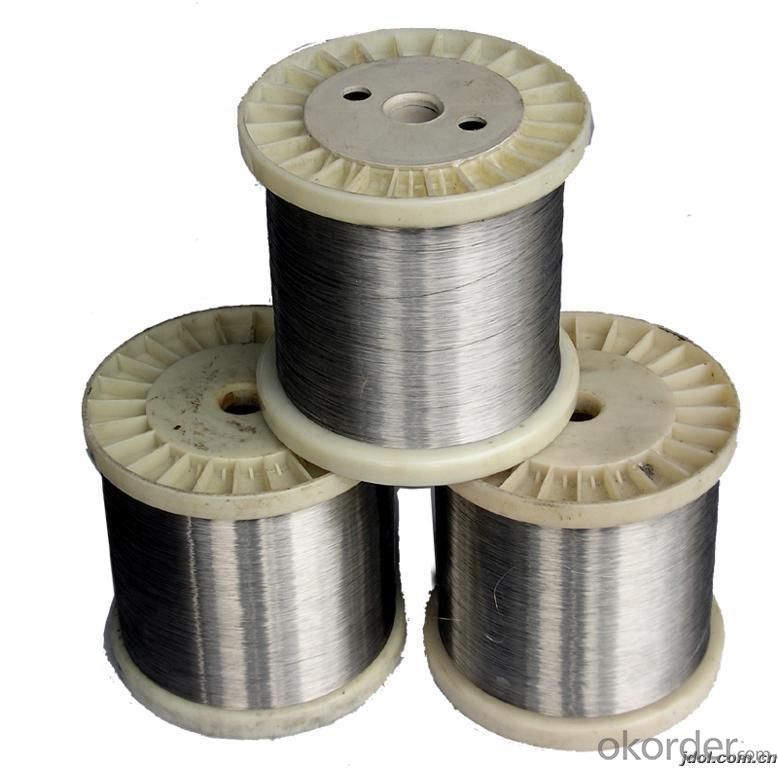
- Q:What are the different types of stainless steel wire used in filtration applications?
- In filtration applications, various types of stainless steel wire are commonly utilized. These include the following: 1. Type 304 stainless steel wire: This is the most prevalent wire type employed in filtration applications. It is a versatile and corrosion-resistant wire that offers excellent strength and durability. It is suitable for a wide range of filtration applications, including water, oil, and air filtration. 2. Type 316 stainless steel wire: This wire type is renowned for its outstanding corrosion resistance, particularly in harsh environments. It contains molybdenum, which enhances its resistance to pitting and crevice corrosion. Type 316 stainless steel wire is frequently used in applications requiring high levels of corrosion resistance, such as marine and chemical filtration. 3. Type 430 stainless steel wire: Compared to Type 304 and Type 316, this wire type is less commonly employed in filtration applications. It offers good corrosion resistance and is generally more cost-effective than the other types. Type 430 stainless steel wire is often utilized in less demanding filtration applications where cost plays a significant role. 4. Type 321 stainless steel wire: Stabilized with titanium, this wire type provides improved resistance to intergranular corrosion. It is commonly used in filtration applications involving high temperatures, such as filtering hot gases or liquids. 5. Type 410 stainless steel wire: Known for its high strength and hardness, this wire type is frequently utilized in filtration applications where mechanical strength and wear resistance are crucial, such as filtering abrasive materials. These examples illustrate the variety of stainless steel wire types employed in filtration applications. The selection of wire type depends on specific filtration requirements, including the desired level of corrosion resistance, mechanical strength, and temperature resistance for the application.
- Q:Is stainless steel wire suitable for wire EDM machining?
- Yes, stainless steel wire is suitable for wire EDM machining. Wire electrical discharge machining (EDM) is a process that uses a thin, electrically conductive wire to cut materials with precision. Stainless steel wire is commonly used in wire EDM machining due to its excellent electrical conductivity and high tensile strength. Stainless steel wire offers several advantages for wire EDM machining. Firstly, it has a high melting point, which allows it to withstand the intense heat generated during the EDM process. This makes it suitable for machining materials with high hardness, such as tool steels or hardened alloys. Additionally, stainless steel wire has good corrosion resistance, which ensures its durability and longevity during the machining process. It also exhibits excellent dimensional stability, meaning that it maintains its shape and size even under high tension. This is crucial for achieving accurate and precise cuts in the machining process. Furthermore, stainless steel wire is available in various grades, each with its own unique properties. This allows for flexibility in selecting the appropriate stainless steel wire for specific machining requirements. For example, some grades of stainless steel wire offer improved machinability or higher tensile strength, making them suitable for different applications. In summary, stainless steel wire is a suitable choice for wire EDM machining due to its excellent electrical conductivity, high melting point, corrosion resistance, dimensional stability, and variety of available grades. It enables precise and accurate cutting of various materials, making it a valuable tool in the manufacturing industry.
- Q:How are stainless steel wire rings used in jewelry making?
- Stainless steel wire rings are commonly used in jewelry making due to their durability, versatility, and attractive appearance. They can be used in a variety of ways to create unique and stylish designs. One common use of stainless steel wire rings in jewelry making is for creating chainmaille jewelry. Chainmaille is an ancient technique where metal rings are interwoven to form intricate patterns. Stainless steel wire rings are ideal for this purpose as they are strong and resistant to tarnishing, ensuring the longevity of the jewelry piece. Chainmaille jewelry can range from simple designs to more complex weaves, providing endless possibilities for creativity. Another popular use of stainless steel wire rings is for making jump rings. Jump rings are commonly used in jewelry making to connect different components together, such as chains, pendants, or charms. Stainless steel wire rings are perfect for making sturdy and reliable jump rings that will securely hold the various elements of a jewelry piece together. They can be easily opened, attached to other components, and closed again, making them a versatile component for jewelry assembly. In addition to chainmaille and jump rings, stainless steel wire rings can also be used as a base for wire wrapping techniques. Wire wrapping involves the art of twisting and shaping wire around stones, beads, or other decorative elements to create intricate designs. Stainless steel wire rings provide a strong and stable foundation for wire wrapping, ensuring that the final piece is secure and durable. They can be easily manipulated and shaped into various forms, allowing jewelry makers to bring their creative visions to life. Furthermore, stainless steel wire rings are highly resistant to rust and corrosion, making them suitable for both everyday and special occasion jewelry. They are hypoallergenic and do not tarnish, making them a great choice for individuals with sensitive skin or allergies. Overall, stainless steel wire rings are a valuable component in jewelry making, offering durability, versatility, and aesthetic appeal. Whether it is for chainmaille, jump rings, wire wrapping, or other techniques, stainless steel wire rings provide endless possibilities for creating unique and long-lasting jewelry pieces.
- Q:Can stainless steel wire be used for filtration applications?
- Indeed, filtration applications can utilize stainless steel wire. This material, known for its durability and resistance to corrosion, proves highly suitable for diverse filtration procedures. Particularly in industrial environments, stainless steel wire is commonly employed to filter liquids, gases, and particles. To attain desired filtration efficiency, the wire can be woven into various mesh sizes and shapes. Furthermore, it is possible to enhance the wire's filtration properties by coating or treating it with different substances, thereby improving its resistance to high temperatures or chemical reactions. Ultimately, stainless steel wire serves as a versatile solution capable of effectively meeting the filtration requirements of various industries.
- Q:Can stainless steel wire fasteners be used in corrosive environments?
- Yes, stainless steel wire fasteners can be used in corrosive environments. Stainless steel is known for its high resistance to corrosion due to the presence of chromium, which forms a protective oxide layer on its surface. This oxide layer acts as a barrier, preventing the metal from coming into direct contact with corrosive elements in the environment. As a result, stainless steel wire fasteners are ideal for use in corrosive environments such as marine, chemical, and industrial settings where exposure to moisture, chemicals, or saltwater can cause corrosion.
- Q:202 stainless steel wire can pass 200 hours salt mist test?
- 202 stainless steel wire can not pass 200 hours salt mist test, 202 stainless steel is one of 200 series stainless steel, the national standard model is 1Cr18Mn8Ni5N. 200 series stainless steel is low nickel, high manganese stainless steel, nickel content, manganese content of about 8%, is a nickel type stainless steel. Stainless steel passivation solution can be used to improve the rust resistance and corrosion resistance of stainless steel, improve salt spray test time, should not change the physical appearance of the workpiece, size and conductivity and other physical properties.
- Q:What are the different wire surface treatments available for stainless steel wire?
- There are several different wire surface treatments available for stainless steel wire. These treatments are applied to the surface of the wire to enhance its properties and improve its performance in various applications. 1. Passivation: Passivation is a common treatment for stainless steel wire. It involves the use of a chemical solution to remove any impurities or contaminants from the surface of the wire. This helps to improve the corrosion resistance of the wire and extend its lifespan. 2. Electro-polishing: Electro-polishing is another surface treatment for stainless steel wire. It involves the use of an electrical current and an electrolyte solution to remove a thin layer of material from the surface of the wire. This process helps to smooth out any imperfections and improve the surface finish of the wire. 3. Coating: Coating is a popular treatment for stainless steel wire, especially for applications that require enhanced corrosion resistance or improved electrical conductivity. There are various coating options available, including zinc coating, nickel coating, and polymer coating. These coatings provide a protective layer on the surface of the wire, preventing it from coming into direct contact with the environment and reducing the risk of corrosion. 4. Annealing: Annealing is a heat treatment process that involves heating the stainless steel wire to a specific temperature and then slowly cooling it. This treatment helps to relieve internal stresses, improve the ductility of the wire, and enhance its mechanical properties. 5. Shot blasting: Shot blasting is a mechanical treatment that involves propelling small metal particles at high speed onto the surface of the stainless steel wire. This process helps to remove any scale, rust, or contaminants from the surface of the wire and improve its appearance. These are just a few examples of the different wire surface treatments available for stainless steel wire. The choice of treatment depends on the specific requirements of the application and the desired properties of the wire. It is important to select the appropriate treatment to ensure optimal performance and longevity of the wire in its intended use.
- Q:What are the different types of stainless steel wire braids?
- There are several different types of stainless steel wire braids that are commonly used in various industries. These include: 1. Standard braids: These are the most common type of stainless steel wire braids and are typically made from AISI 304 or AISI 316 stainless steel. They offer good flexibility and resistance to corrosion, making them suitable for a wide range of applications. 2. High-tensile braids: These braids are made from stainless steel alloys with higher tensile strength, such as AISI 302 or AISI 321. They are specifically designed for applications that require extra strength and durability, such as heavy machinery or high-pressure systems. 3. Ultra-flexible braids: As the name suggests, these braids are extremely flexible and are often used in applications where flexibility and maneuverability are crucial, such as in medical devices or robotics. They are typically made from AISI 316L stainless steel, which offers excellent corrosion resistance and biocompatibility. 4. Coated braids: Some stainless steel wire braids are coated with a layer of polymer or silicone material to provide additional protection against abrasion or chemicals. These coatings can also enhance the appearance of the braids and make them more comfortable to handle. 5. Flat braids: Unlike traditional round braids, flat braids have a flattened profile. They are commonly used in applications that require a low profile or when space is limited. Flat braids can be made from various stainless steel alloys, depending on the specific requirements of the application. Overall, the different types of stainless steel wire braids offer a wide range of properties and characteristics to meet the diverse needs of different industries. Selecting the right type of braid depends on factors such as the application requirements, environment, and desired performance characteristics.
- Q:What are the different types of stainless steel wire used in musical instruments?
- There are several different types of stainless steel wire commonly used in the construction of musical instruments. One of the most common types is 304 stainless steel, which is known for its corrosion resistance and durability. This type of wire is often used in the production of guitar strings, piano wires, and some brass instrument valves. Another type of stainless steel wire used in musical instruments is 316 stainless steel. This alloy contains a higher percentage of nickel and molybdenum, which enhances its resistance to corrosion, especially in harsh environments such as marine settings. 316 stainless steel wire is commonly used in the construction of wind instruments like saxophones, trumpets, and trombones. In addition to these types, there are also specialized stainless steel wires used in specific musical instruments. For example, 17-7 PH stainless steel wire is often used in the manufacturing of piano strings due to its excellent tensile strength and corrosion resistance. This type of wire helps produce a rich and resonant sound in pianos. Overall, the choice of stainless steel wire in musical instruments depends on various factors such as the instrument type, desired sound quality, and environmental conditions. Manufacturers select the appropriate type of stainless steel wire to ensure optimal performance, durability, and resistance to corrosion for each specific musical instrument.
- Q:Does stainless steel wire have any health benefits?
- No direct health benefits are associated with stainless steel wire. The main advantage of stainless steel lies in its durability, strength, and resistance to corrosion, making it highly sought after in industries like construction, automotive, and manufacturing. Although stainless steel wire can be utilized in medical devices such as surgical instruments and orthopedic implants, its health benefits stem from the functionality and performance of these devices, rather than the wire itself. When used in isolation, stainless steel wire does not possess any inherent properties that promote health or well-being.
1. Manufacturer Overview |
|
|---|---|
| Location | |
| Year Established | |
| Annual Output Value | |
| Main Markets | |
| Company Certifications | |
2. Manufacturer Certificates |
|
|---|---|
| a) Certification Name | |
| Range | |
| Reference | |
| Validity Period | |
3. Manufacturer Capability |
|
|---|---|
| a)Trade Capacity | |
| Nearest Port | |
| Export Percentage | |
| No.of Employees in Trade Department | |
| Language Spoken: | |
| b)Factory Information | |
| Factory Size: | |
| No. of Production Lines | |
| Contract Manufacturing | |
| Product Price Range | |
Send your message to us
AWS a5.18 er70s-6 co2 Gas Shileld Welding Wire
- Loading Port:
- Qingdao
- Payment Terms:
- TT or LC
- Min Order Qty:
- 10 m.t.
- Supply Capability:
- 1000 m.t./month
OKorder Service Pledge
OKorder Financial Service
Similar products
New products
Hot products
Hot Searches
Related keywords
